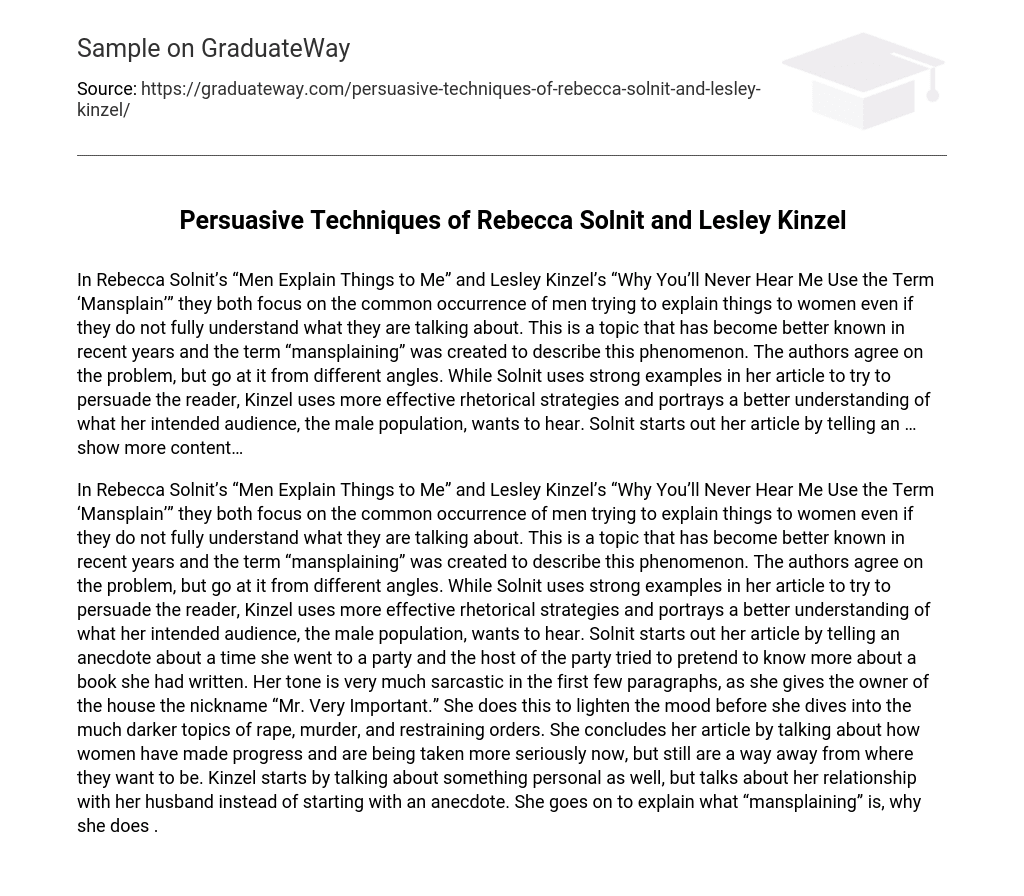In their respective works, Rebecca Solnit’s “Men Explain Things to Me” and Lesley Kinzel’s “Why You’ll Never Hear Me Use the Term ‘Mansplain,'” both authors delve into the prevalent occurrence of men offering explanations to women without fully grasping the subject matter. The term “mansplaining” was coined to encapsulate this phenomenon, gaining significant traction in recent times. Despite addressing the same issue, Solnit and Kinzel approach it from contrasting angles. Solnit effectively employs compelling examples to sway readers, while Kinzel utilizes persuasive rhetorical tactics and displays a keener understanding of her male audience’s desires. Commencing her piece with a personal encounter wherein she is condescended by a man, Solnit illustrates how societal expectations and language impact discussions on gender. Both articles shed light on the problem of men expounding upon topics without possessing expertise when interacting with women.
not use the term, and why she believes it is not an effective way to address the issue.Kinzel also addresses the problem of men explaining things to women without fully understanding, but she takes a more empathetic and approachable tone.She acknowledges that this behavior can be frustrating and dismissive, but she believes that using the term “mansplaining” can alienate men and hinder productive conversations about gender dynamics.She suggests that a more constructive approach is to educate and engage with men, encouraging them to listen and learn from women’s experiences.Kinzel emphasizes the importance of empathy, understanding, and open dialogue in creating meaningful change.Solnit and Kinzel both highlight the issue of men explaining things to women without fully understanding, but they have different approaches and perspectives.Solnit’s article is filled with strong examples and a sarcastic tone, while Kinzel’s article focuses on empathy, understanding, and constructive dialogue.





